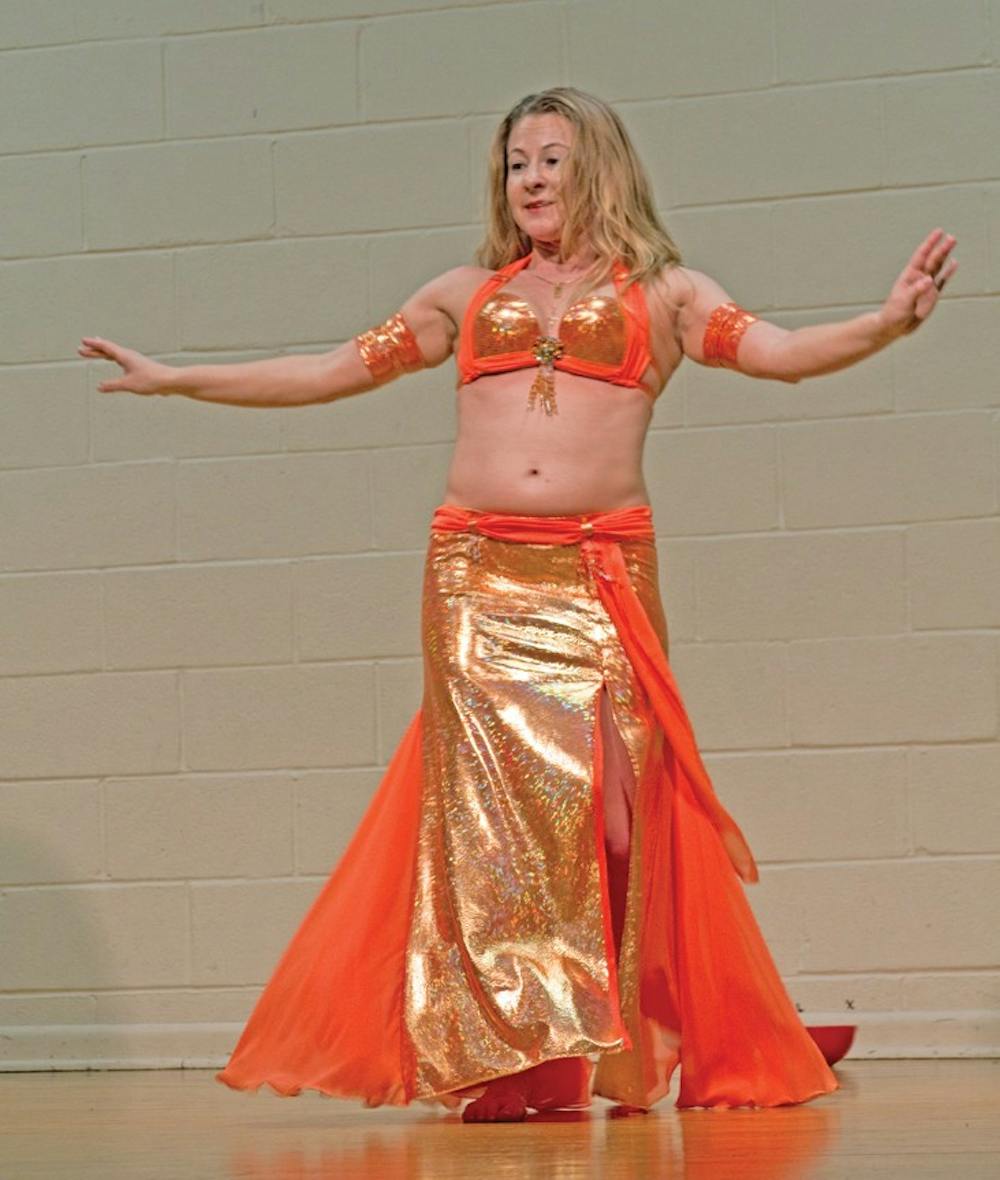With every hip-shake and every step they took to Turkish pop music, the belly dancers shone with confidence in their curves on the dance floor.
Deborah Colley of Shippensburg wants her students to throw their stress out the car window as they drive past the peaceful fields of horses toward her studio. Colley gives women the key to positive body image that is often hidden behind insecurities and impossible standards.
“I’m not saying people shouldn’t strive to be healthier, but I never make it a focus that to perform you have to lose weight or that you have to do anything like that,” said Colley, 51. “It never comes up here. I want women to come in here and find a sanctuary.”
Students can find themselves lost in the ancient art form of belly dancing that celebrates the human body at Colley’s dance floor. She began immersing herself in the tight-knit belly dancing community 12 years ago and now teaches the practice in her home at 6521 Molly Pitcher Highway.
“I wanted to try something different,” Colley said. “The fitness center where I worked at was offering a six week belly dance class. So I took it and I fell in love. I’ve been dancing ever since.”
One of Colley’s students, Elizabeth Reed, 44, always wanted to belly dance. A year and a half ago she watched Troupe Asherah’s performance and decided to give Colley’s classes a try.
“I saw them perform and I didn’t feel as intimidated [to try belly dancing],” Reed said “but I didn’t come in here with much confidence.”
Since taking classes, along with Sierra Walker, 15, they have performed for several audiences. Both have performed at Shippensburg’s annual Corn Festival.
“Elizabeth has really changed since I first met her,” Colley said. “She’s a lot more confident now- — Sierra too in some ways.”
Sierra thoroughly enjoys belly dancing but finds it difficult to instill the same enthusiasm in her peers.
“It’s so fun and it’s so good for you,” she said, only to meet her friends’ typical reactions of fear and reluctance.
“It’s not a dirty thing; that’s how people back in the ’70s viewed it,” said Karen Walker, Sierra’s mother “it’s good for your body. It’s therapeutic.”
Colley directs and choreographs Troupe Asherah (uh-sheer-uh). She formed it with four other members who began as Colley’s students.
Music and costume choice play a big part in swaying the mood of the dance. They move to Turkish and Arabic music at haflas (dance parties), festivals, fundraisers and restaurants in Pennsylvania and the surrounding states. Colley falls toward the traditional Egyptian inspired side of the belly-dancing spectrum while adding a bit of a modern American twist.
“Belly dancing in Egypt isn’t thought of as belly dancers,” she said “it’s just how they dance. Just like when we would go out to the club and dance or whatever. Of course there are folkloric styles of dance, like we would think of square dancing as folkloric for us Americans. So yeah, the guys dance, the women dance, they all dance. It’s very much a family thing and a community thing over there.”
Dance styles range from whimsical to industrial and sassy. The dancers can flow to low and sensual rhythms, then speed up to lively, drum-enhanced tempos. Beaded bras, flowing skirts and hip scarves that jingle are often seen on the women of Troupe Asherah. They make patterns in the air with colorful veils as they skillfully move them back and forth over their shoulders.
Colley uses one of her signature props to add a little spice to her performance; a sword. The sword is balanced specifically for belly dancing, and some that Colley owns are blunt facing down with a sharp edge facing up.
“Belly dance is about isolation,” said Colley “so if you put something on your head you have to isolate, because if you’re bouncing around it’s not going to stay on your head.”
Isolation means only one part of the body gets attention at a time.
If hips are moving then other parts “should be quiet,” she said. Balancing props such as swords or electric candles on their heads is a good way for her students to practice controlling isolation in their movements.
“I won’t ever be done dancing,” said Colley, “but I feel like that’s my gift. That I can teach this and that I can give them that hour every week.”


The Slate welcomes thoughtful discussion on all of our stories, but please keep comments civil and on-topic. Read our full guidelines here.